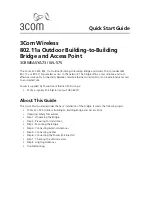
}
Destination IP:
Specify the IP address of the destination network or host.
Subnet Mask:
Specify the subnet mask of the destination network or host.
Gateway IP Address:
Specify the IP address of the next hop router to which to
forward the packets.
Priority:
Specify the priority of the static route. If there are multiple routes to the
same destination with different priorities, the Device will choose the route with the
highest priority to forward the packets. The smaller the number, the higher the
priority.
Interface
: Specify the outbound interface through which the packets are
forwarded to the next hop gateway or router. The available options are the name
of each physical interface.
Note:
1) When creating a static route, you should specify the next hop IP address by the
Gateway IP
Address
or
Interface
.
2) In most cases, please don
’t modify the system reserved static route (e.g., Default,
Detect) to avoid surfing the Internet abnormally.
5.3
Policy Routing
This section describes the
Advanced > Policy Routing
page.
Policy Routing provides a tool for forwarding and routing data packets based on the
user-defined policies. Different from the traditional destination-based routing
mechanism, Policy Routing enables you to use policies based on source and
destination address, protocol, port, schedule, and other criteria to route packets
flexibly.
















































